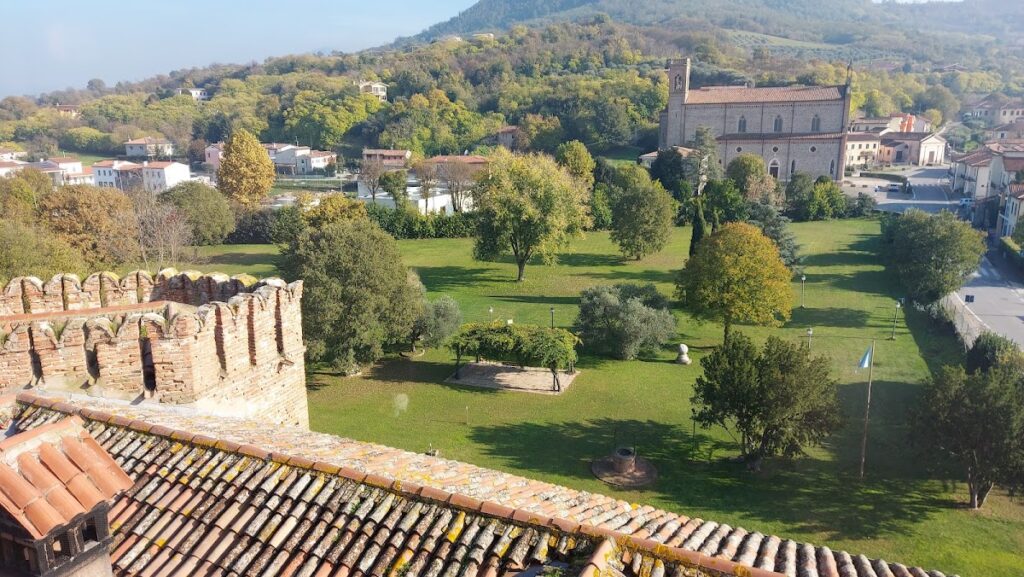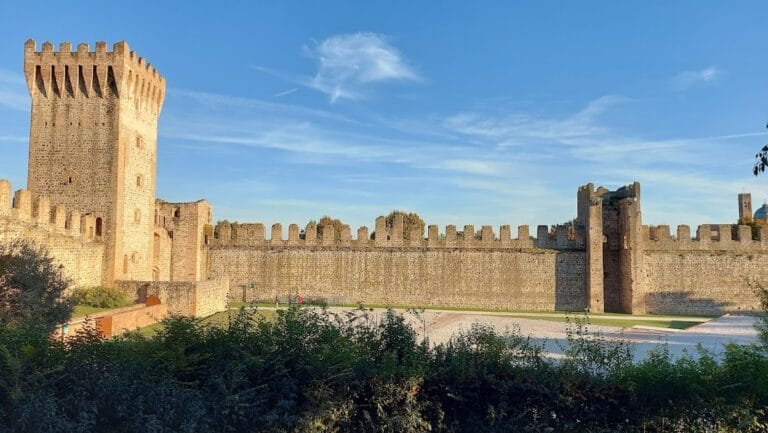Valbona Castle: A Medieval Fortress in Lozzo Atestino, Italy
Visitor Information
Google Rating: 4.4
Popularity: Low
Google Maps: View on Google Maps
Official Website: www.castellodivalbona.eu
Country: Italy
Civilization: Unclassified
Remains: Military
History
Valbona Castle stands in the municipality of Lozzo Atestino, Italy. It was originally constructed by medieval inhabitants around the year 1000, building upon a site with much older roots linked to prehistoric and ancient communities of the region.
The area around the castle reveals traces of early settlements, including prehistoric pile dwellings and remains of a Paleovenetian fortification, indicating its long-standing strategic significance. By the mid-13th century, the castle already held military importance, serving as a defensive stronghold within the region. Following the deliberate demolition of the nearby Castello di Lozzo in 1313 by Nicolo II da Lozzo—who sought to prevent its capture by the city of Padua—Valbona Castle rose in prominence as the main fortified site in the area.
In the 1330s, the castle came under the control of the Carraresi family, the ruling dynasty of Padua. They undertook restoration and strengthening work to reinforce the castle’s defenses. Under Ubertino I da Carrara’s rule between 1318 and 1345, the castle gained further strategic importance, highlighted by the placement of his personal insignia above its main gates. This period reinforced the castle’s role in overseeing surrounding plains and controlling key trade routes, including the important Canale Bisato waterway.
With the advent of Venetian rule, Valbona Castle gradually lost its direct military relevance but retained a role in observation and territorial control. During the War of the League of Cambrai (1509–1518), the castle was occupied briefly by French soldiers, reflecting its continued strategic interest even in the early 16th century. Over subsequent centuries, ownership passed through various noble families, weaving the castle into the broader political and territorial developments of northern Italy.
The castle’s internal facilities included prisons, which have been documented in historical records. These mention inmates, their crimes, and executions carried out by decapitation until 1405, the year Venice assumed jurisdiction over serious criminal matters in the region.
Today, archaeological investigations have uncovered artifacts such as stone cannonballs used in siege engines and elements of the castle’s architecture, allowing a clearer understanding of its historic military functions and adaptations over time. The castle now serves cultural and event-related purposes, maintaining its presence as a significant landmark.
Remains
Valbona Castle is built on a roughly rectangular layout, measuring approximately 40 by 25 meters. Its imposing walls stand around 11 meters high and show a tapering thickness, one meter wide at the base narrowing to half a meter at the top. The enclosure is punctuated by six towers: four of these occupy the northern and southern sides and are hexagonal in shape, each rising about 16.3 meters. The remaining two, positioned halfway along the eastern and western walls, are square in design. At the center stands a taller keep tower, reaching 22 meters.
Originally, the castle was surrounded by a deep moat filled with water, designed to hinder attackers. Although this moat has since been filled in, traces show that two main gates—one to the east and one to the west—were linked to the drawbridges once spanning this defensive barrier. The western gate is distinguished by the white stone insignia of Ubertino I da Carrara along with the Carraresi family coat of arms, reflecting the castle’s restored status under their rule.
Several defensive features are visible or documented around the castle. For example, iron rings on the windows once held wooden shutters which could be quickly opened to allow defenders to fire arrows or other projectiles while remaining protected. Above the main gates, stone-formed, angled gutters were positioned to pour boiling oil onto enemy attackers attempting to breach the entrances. Nearby archaeological finds include smooth stone cannonballs, understood to have been used in catapults and battering devices from the castle’s active military period.
Inside the enclosure lies a central courtyard anchored by a well providing drinkable water. Along the western side, arcades once housed the castle’s animals, while adjacent storage areas beneath roofing were used for storing hay and fodder. This reveals the castle’s role not only as a military outpost but also as a self-sustaining establishment.
A notable internal feature is the corridor known as the “Old Customs.” Located near the western gate, this passage controlled movement through the formerly marshy surrounding territory. It was where taxes were levied and travelers monitored, emphasizing the castle’s role in regulating trade and transit.
The “Armory Hall” served as both sleeping quarters for military personnel and storage for weapons. A small apse near its stairway suggests the presence of a votive figure or religious image, reflecting the spiritual protections sought by inhabitants.
At the base of the northwest tower lie the castle’s ancient prisons, which have been carefully reconstructed to mirror their historical state. Historical records detail their use for detaining criminals, adding a somber layer to the castle’s story.
The hexagonal shape of the corner towers is an uncommon design in medieval fortifications, one that required greater investment but offered enhanced structural strength and coverage in multiple directions. Despite the castle’s primarily austere and functional military appearance, some decorative elements have survived, such as an ancient fireplace within the courtyard, hinting at moments of domestic life amid defense.
Collectively, these remains provide a well-preserved window into the castle’s military engineering, daily operations, and evolving role through centuries of regional history.










